Do yourself a favor and get accustomed to project-based learning. This is my philosophy to the most effective learning you can do. A home lab is a great way to do this. AND, getting into using containers will totally change your mindset on how you run your applications. Using Docker, you can totally spin up your containerized environment using simple Docker Compose code and even form these into stacks of apps that you can bring up and down as you want. Let’s look at 10 Docker Projects you can build in a weekend and that actually give you something you can use.
1. Gitea for Self-Hosted Git Repositories
Having your own self-hosted code repo is the way to go to start learning DevOps and infrastructure as code. It will help you get up to speed very quickly with git commands and learn the workflows of DevOps. Of course, the next decision is which solution should you host? Well, that is where Gitea is quickly becoming a favorite, due to the fact it is lightweight and it is almost a clone it looks like of GitHub which many are familiar with. I still prefer GitLab over all other solutions, but to begin with if you are looking for a Docker solution for code repo, Gitea is a great place to start.
You can use the example Docker Compose code below to get started with Gitea.
version: "3.8"
services:
gitea:
image: gitea/gitea:latest
container_name: gitea
environment:
- USER_UID=${GITEA_UID}
- USER_GID=${GITEA_GID}
- GITEA__database__DB_TYPE=mysql
- GITEA__database__HOST=gitea-db:3306
- GITEA__database__NAME=${GITEA_DB_NAME}
- GITEA__database__USER=${GITEA_DB_USER}
- GITEA__database__PASSWD=${GITEA_DB_PASS}
- GITEA__security__INSTALL_LOCK=${GITEA_INSTALL_LOCK}
- GITEA__security__SECRET_KEY=${GITEA_SECRET_KEY}
- GITEA__service__DISABLE_REGISTRATION=${GITEA_DISABLE_REG}
# Optional: set ROOT_URL if behind a proxy
- GITEA__server__ROOT_URL=${GITEA_ROOT_URL}
# Initial admin (only used on first init; safe to keep blank afterward)
- GITEA__admin__USERNAME=${GITEA_ADMIN_USER}
- GITEA__admin__PASSWORD=${GITEA_ADMIN_PASS}
- GITEA__admin__EMAIL=${GITEA_ADMIN_EMAIL}
# Mailer
- GITEA__mailer__ENABLED=${GITEA_MAIL_ENABLED}
- GITEA__mailer__SMTP_ADDR=${GITEA_SMTP_ADDR}
- GITEA__mailer__SMTP_PORT=${GITEA_SMTP_PORT}
- GITEA__mailer__FROM=${GITEA_MAIL_FROM}
- GITEA__mailer__PROTOCOL=${GITEA_MAIL_PROTOCOL}
# Security
- GITEA__security__ALLOWED_DOMAINS=${GITEA_ALLOWED_DOMAINS}
- GITEA__security__ALLOW_LOCALNETWORKS=${GITEA_ALLOW_LOCALNETWORKS}
volumes:
- /opt/gitea/data:/data
networks:
- npm-stack_nginxproxy
depends_on:
gitea-db:
condition: service_healthy
restart: unless-stopped
gitea-db:
image: mysql:8
container_name: gitea-db
environment:
- MYSQL_ROOT_PASSWORD=${MYSQL_ROOT_PASSWORD}
- MYSQL_USER=${GITEA_DB_USER}
- MYSQL_PASSWORD=${GITEA_DB_PASS}
- MYSQL_DATABASE=${GITEA_DB_NAME}
volumes:
- /opt/gitea-db/mysql-data:/var/lib/mysql
networks:
- npm-stack_nginxproxy
healthcheck:
test: ["CMD", "mysqladmin", "ping", "-h", "localhost"]
interval: 10s
timeout: 5s
retries: 5
start_period: 30s
restart: unless-stopped
gitea-runner:
image: gitea/act_runner:latest
container_name: gitea-runner
environment:
- CONFIG_FILE=/config.yaml
- GITEA_INSTANCE_URL=${GITEA_INSTANCE_URL}
- GITEA_RUNNER_REGISTRATION_TOKEN=${GITEA_RUNNER_REGISTRATION_TOKEN}
- GITEA_RUNNER_NAME=${GITEA_RUNNER_NAME}
- GITEA_RUNNER_LABELS=${GITEA_RUNNER_LABELS}
volumes:
- /opt/gitea-runner/config.yaml:/config.yaml
- /opt/gitea-runner/cache:/cache
- /opt/gitea-runner/data:/data
- /var/run/docker.sock:/var/run/docker.sock
networks:
- npm-stack_nginxproxy
depends_on:
gitea:
condition: service_started
restart: unless-stopped
networks:
npm-stack_nginxproxy:
external: true
2. Netdata to start monitoring
Netdata is one of the easiest monitoring solutions you will find for monitoring your home lab environment. It is easily installed with a lightweight agent that you install on your Linux and Windows hosts, and it picks up Docker containers you are running as well as Kubernetes metrics. And, I like that it is a simple container that you provision for getting it spun up.
Check out the following example Docker run code. Just enter your claim token and room ID:
docker run -d --name=netdata \
--pid=host \
--network=host \
-v netdataconfig:/etc/netdata \
-v netdatalib:/var/lib/netdata \
-v netdatacache:/var/cache/netdata \
-v /:/host/root:ro,rslave \
-v /etc/passwd:/host/etc/passwd:ro \
-v /etc/group:/host/etc/group:ro \
-v /etc/localtime:/etc/localtime:ro \
-v /proc:/host/proc:ro \
-v /sys:/host/sys:ro \
-v /etc/os-release:/host/etc/os-release:ro \
-v /var/log:/host/var/log:ro \
-v /var/run/docker.sock:/var/run/docker.sock:ro \
-v /run/dbus:/run/dbus:ro \
--restart unless-stopped \
--cap-add SYS_PTRACE \
--cap-add SYS_ADMIN \
--security-opt apparmor=unconfined \
-e NETDATA_CLAIM_TOKEN=<your claim token \
-e NETDATA_CLAIM_URL=https://app.netdata.cloud \
-e NETDATA_CLAIM_ROOMS=<your claim room> \
netdata/netdata:stable
3. Nginx Proxy Manager to put SSL on everything
One of the best projects you can spin up is Nginx Proxy Manager. My recommendation for those that are getting into home labs is to start with Nginx Proxy Manager as it provides a simple GUI to manage your Docker container SSL certificates for your containers and easily lets you provision Lets Encrypt certs. Having SSL certs on your containers with web interfaces just makes everything more secure and work better with other solutions that may not deal well with self-signed certificates.
Check out the example Docker Compose code you can use to spin it up below:
version: '3'
services:
npm:
image: jc21/nginx-proxy-manager:latest
container_name: npm
ports:
- "80:80"
- "81:81"
- "443:443"
volumes:
- ./data:/data
- ./letsencrypt:/etc/letsencrypt
restart: always
4. Vaultwarden for a self-hosted password manager
If you are looking for a password manager where you control all of your data and no one else has access to your secrets, then self-hosting this is a great way to make sure of that. Vaultwarden is one of the best known self-hosted password managers out there and has gained a reputation as one that is secure and does the job.
Check out the Docker compose code for an example Vaultwarden instance below:
version: '3'
services:
vaultwarden:
image: vaultwarden/server:latest
container_name: vaultwarden
volumes:
- ./vw-data:/data
ports:
- "8080:80"
restart: always
5. Watchtower to keep your containers updated
If there is a solution that helps you with lifecycle management with Docker, it is Watchtower. Watchtower is a solution that, on a schedule, checks yours containers to see if there is a new container image available. If it finds one it stops the container, pulls the new image, and restarts the container with the same configuration using the new image. Pretty cool. In case you are running Docker Swarm, there is a counterpart to Watchtower called Shepherd. It does basically the same thing with your Docker services.
Here is sample Docker Compose code that will get a basic instance of Watchtower up and running for you. The cleanup parameter tells Watchtower to clean up the old images which helps with housekeeping for your disk space.
version: '3'
services:
watchtower:
image: containrrr/watchtower
container_name: watchtower
volumes:
- /var/run/docker.sock:/var/run/docker.sock
environment:
- WATCHTOWER_CLEANUP=true
- WATCHTOWER_POLL_INTERVAL=300
restart: always6. Dozzle for container insights
Dozzle was a solution I just discovered not too long ago and realized what a great little tool it is. It lets you have a quick and easy view of your container logs across many different container hosts. With this, you can quickly view the logs for your containers no matter which host they are running on, without having to SSH into your Docker container hosts and run a docker logs <container name> command.
version: '3'
services:
dozzle:
image: amir20/dozzle:latest
container_name: dozzle
ports:
- "8888:8080"
volumes:
- /var/run/docker.sock:/var/run/docker.sock
restart: always7. Portainer is the best GUI for Docker
If you are looking for the best all around management tool for your Docker containers, Portainer is it. There are other free and open source tools out there, but I have tried them all and there are just none as polished and feature-rich as Portainer. If you don’t currently have a tool to manage your containers across hosts, do yourself a favor and implement Portainer over a weekend project and you will quickly reap the rewards of better management.
Portainer is also one of the best tools you can use if you are delving into Docker Swarm. It absolutely makes the Docker Swarm solution viable in my opinion with the great management features.
version: '3'
services:
portainer:
image: portainer/portainer-ce:latest
container_name: portainer
ports:
- "9443:9443"
volumes:
- /var/run/docker.sock:/var/run/docker.sock
- ./portainer-data:/data
restart: always8. OpenWebUI + Ollama for self-hosted AI at home
This is a pair of solutions I have been playing around with the past few months and I have to say that self-hosting your own AI server is totally awesome. You don’t have to worry about API costs to the major cloud AI providers, and you keep control of your own data.
Also, it is not as hard as you might imagine to self-host your own AI either. With OpenWebUI and Ollama, you have a very ChatGPT like experience from the comforts of your own home lab.
Below is example Docker Compose code to get you started with self-hosting private AI:
version: '3.8'
services:
ollama:
image: ollama/ollama
container_name: ollama
volumes:
- ollama:/root/.ollama
ports:
- "11434:11434"
restart: unless-stopped
openwebui:
image: ghcr.io/open-webui/open-webui:main
container_name: openwebui
depends_on:
- ollama
environment:
- OLLAMA_BASE_URL=http://ollama:11434
ports:
- "3000:3000"
volumes:
- openwebui:/app/backend/data
restart: unless-stopped
volumes:
ollama:
openwebui:9. Home Assistant to get into smart home tech
The Home Assistant solution is absolutely the defacto standard in smart home self-hosting technologies. It is a complete management system for all of your smart home devices and allows you to control them from a single pane of glass interface.
Below is the same Docker Compose code I am running in my environment for Home Assistant and provides side car containers for use in forwarding messages if you need to your HomeAssistant environment.
version: '3.8'
services:
homeassistant:
image: ghcr.io/home-assistant/home-assistant:stable
container_name: homeassistant
user: "1001:1001"
restart: unless-stopped
network_mode: "service:proxy" # attach to Traefik sidecar for SSL
depends_on:
- mosquitto
volumes:
- /srv/homeassistant/config:/config:rw
- homeassistant_db:/config/home-assistant_v2.db
environment:
- TZ=America/Chicago
secrets:
- api_key
healthcheck:
test: ["CMD-SHELL", "curl -f http://localhost:8123/api/health || exit 1"]
interval: 1m
timeout: 10s
retries: 3
cap_drop:
- ALL
cap_add:
- CHOWN
- SETUID
- SETGID
mosquitto:
image: eclipse-mosquitto:latest
container_name: mosquitto
restart: unless-stopped
networks:
homenet:
volumes:
- /srv/mosquitto/config:/mosquitto/config:ro
- /srv/mosquitto/data:/mosquitto/data
- /srv/mosquitto/log:/mosquitto/log
ports:
- "1883:1883"
influxdb:
image: influxdb:2.6
container_name: influxdb
restart: unless-stopped
networks:
homenet:
volumes:
- influxdb_data:/var/lib/influxdb2
environment:
- INFLUXDB_ADMIN_USER=admin
- INFLUXDB_ADMIN_PASSWORD_FILE=/run/secrets/influxdb_admin_password
secrets:
- influxdb_admin_password
ports:
- "8086:8086"
grafana:
image: grafana/grafana:9.5
container_name: grafana
restart: unless-stopped
networks:
homenet:
volumes:
- grafana_data:/var/lib/grafana
environment:
- GF_SECURITY_ADMIN_PASSWORD_FILE=/run/secrets/grafana_admin_password
secrets:
- grafana_admin_password
ports:
- "3000:3000"
networks:
homenet:
driver: macvlan
driver_opts:
parent: eth0
ipam:
config:
- subnet: 192.168.1.0/24
gateway: 192.168.1.1
volumes:
homeassistant_db:
influxdb_data:
grafana_data:10. N8N to automate your workflows
The n8n solution is one of the coolest automation tools I have seen. It provides an easy way to automate entire workflows so that it takes the heavy lifting out of the process. You can think of it like your own self-hosted Zapier that provides hooks into just about any API solution out there. You can use it for automating Git updates, email alerts, file movements, or even things like Home Assistant triggers.
Below is the very basic Docker Compose code you will need. However, check out my recent blog post covering all the details of setup here: Automate Your Home Lab with n8n Workflow Automation and AI.
version: '3'
services:
n8n:
image: n8nio/n8n:latest
container_name: n8n
ports:
- "5678:5678"
environment:
- N8N_BASIC_AUTH_ACTIVE=true
- N8N_BASIC_AUTH_USER=admin
- N8N_BASIC_AUTH_PASSWORD=changeme
- TZ=America/New_York
volumes:
- ./n8n-data:/home/node/.n8n
restart: always
Wrapping it
I get excited thinking about how far Docker projects have brought me in my own personal learning journey and I want to share this with others who are on the same learning path. By spinning up these Docker projects and others, you will set yourself up to learn a TON of new things around containerization, self-hosting, and how to manage modern app infrastructure. Let me know in the comments if you are running some of the projects covered here or if there are others you would recommend.
Google is updating how articles are shown. Don’t miss our leading home lab and tech content, written by humans, by setting Virtualization Howto as a preferred source.

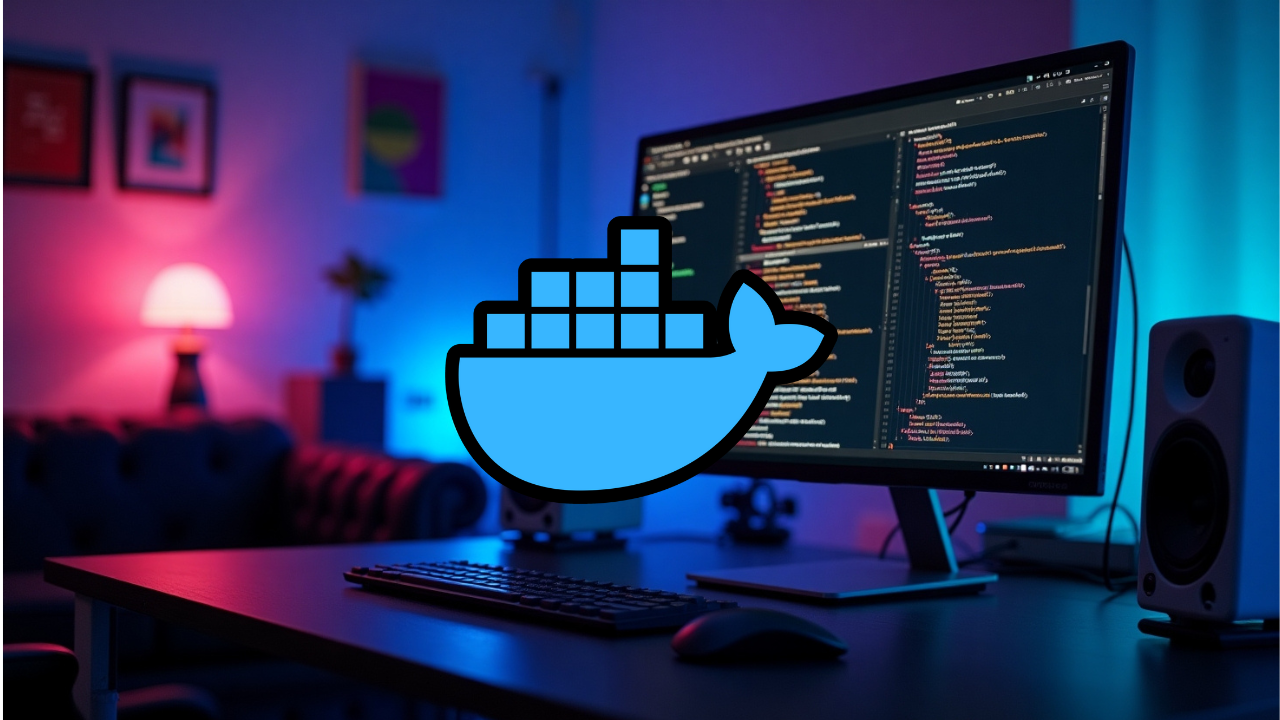
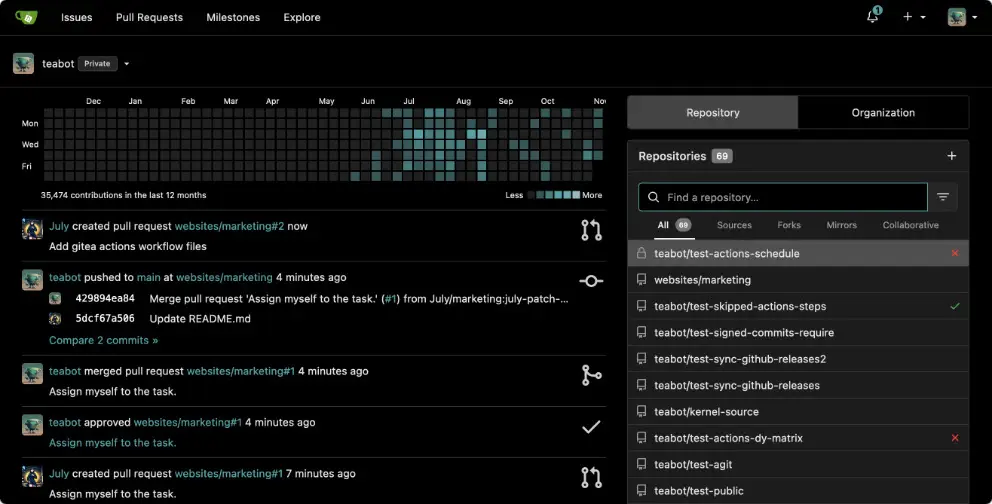
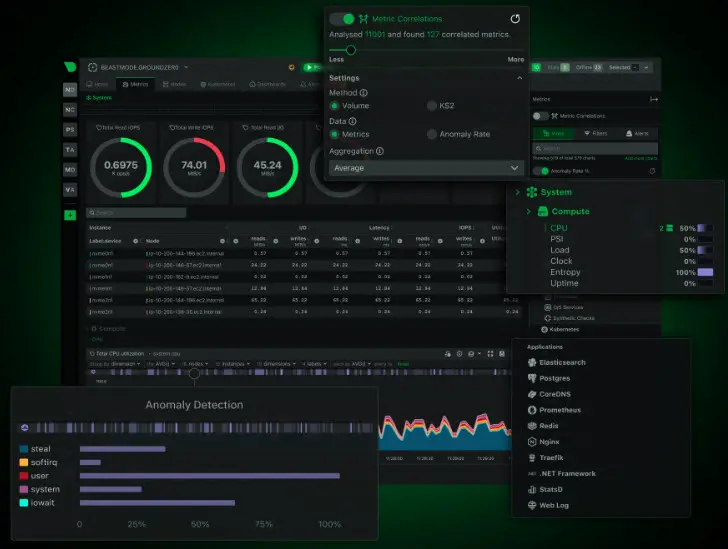
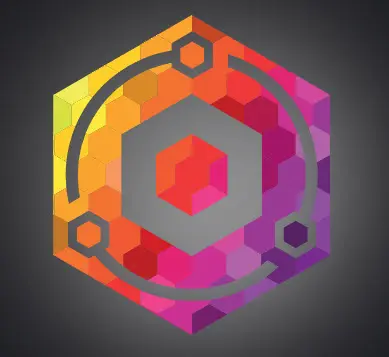

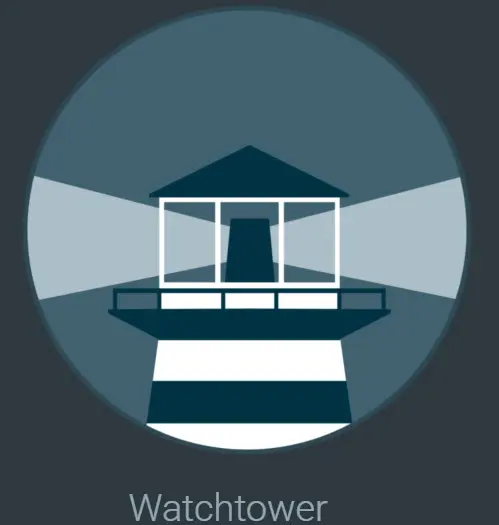
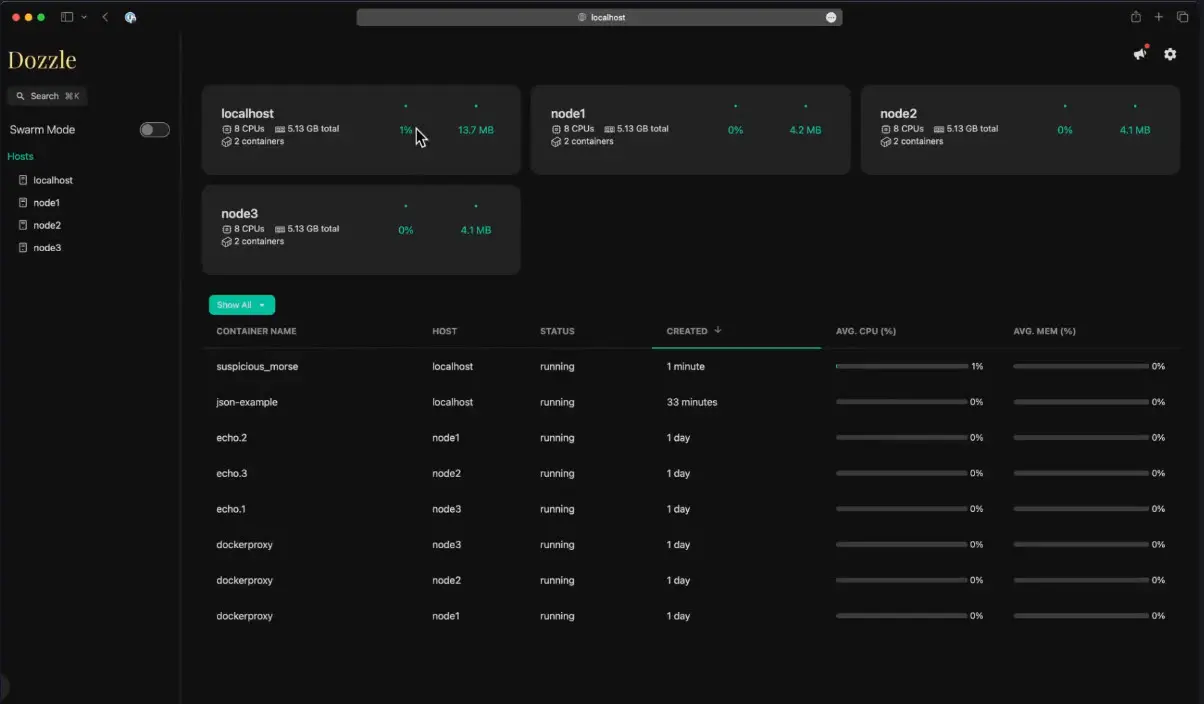
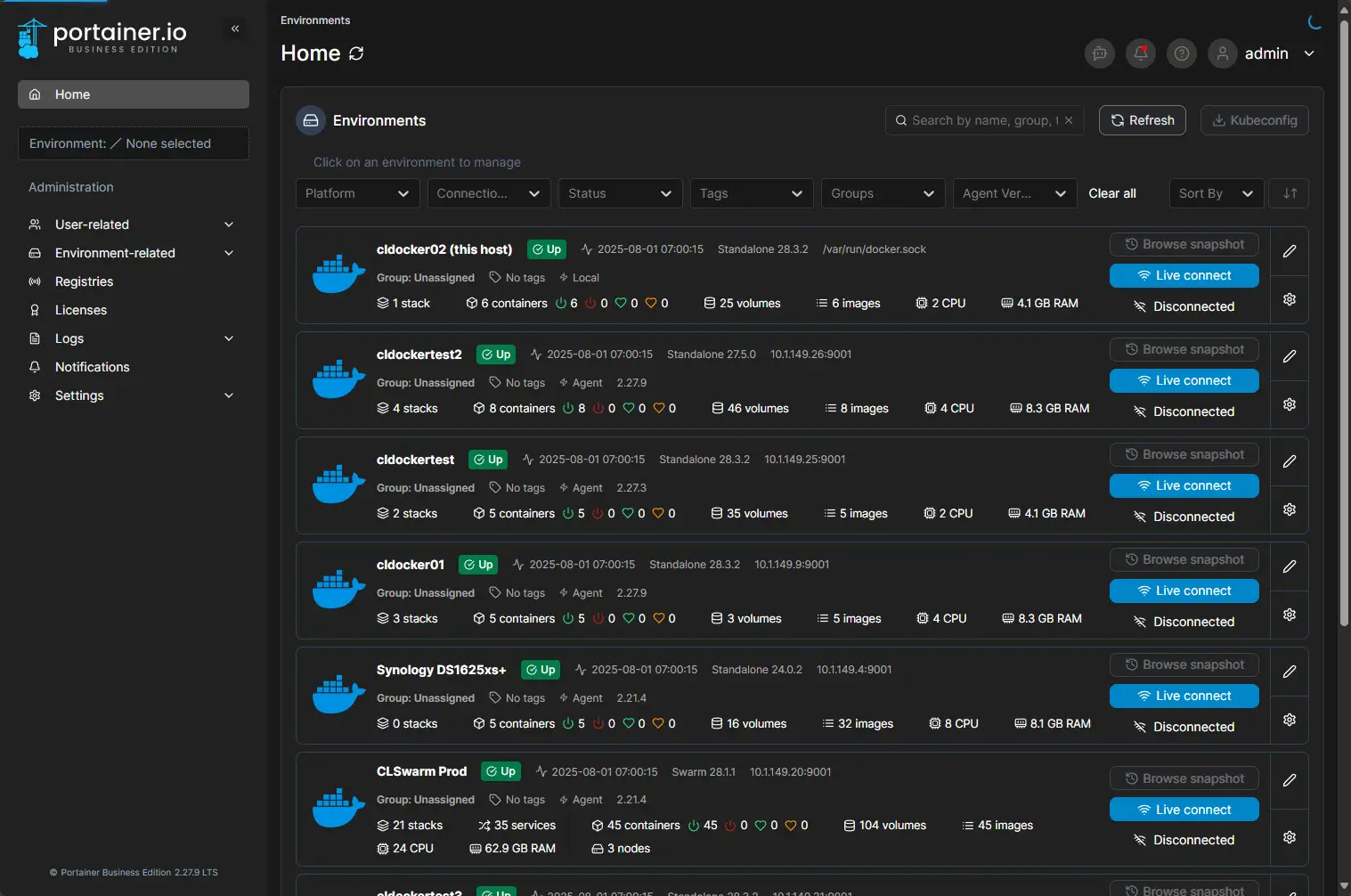
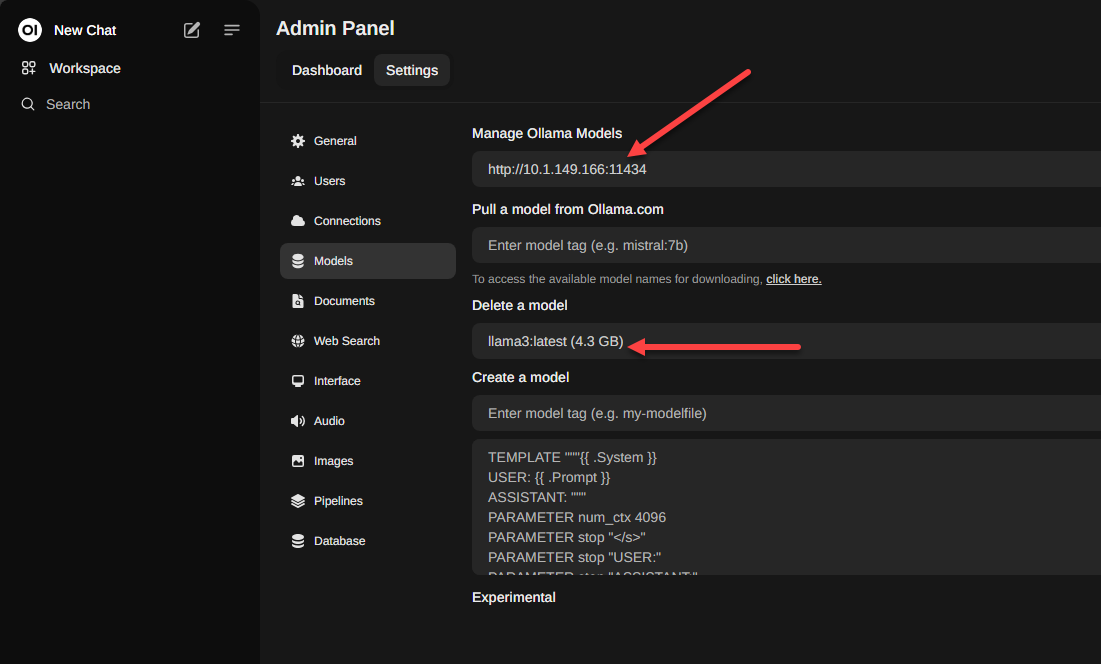
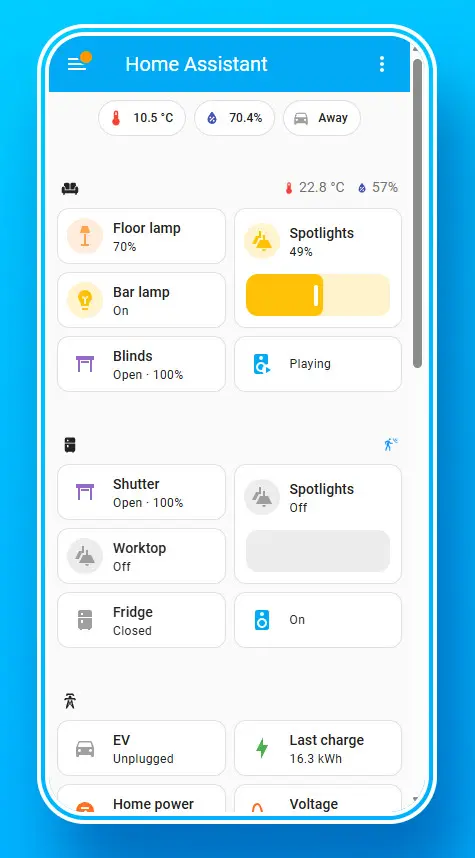
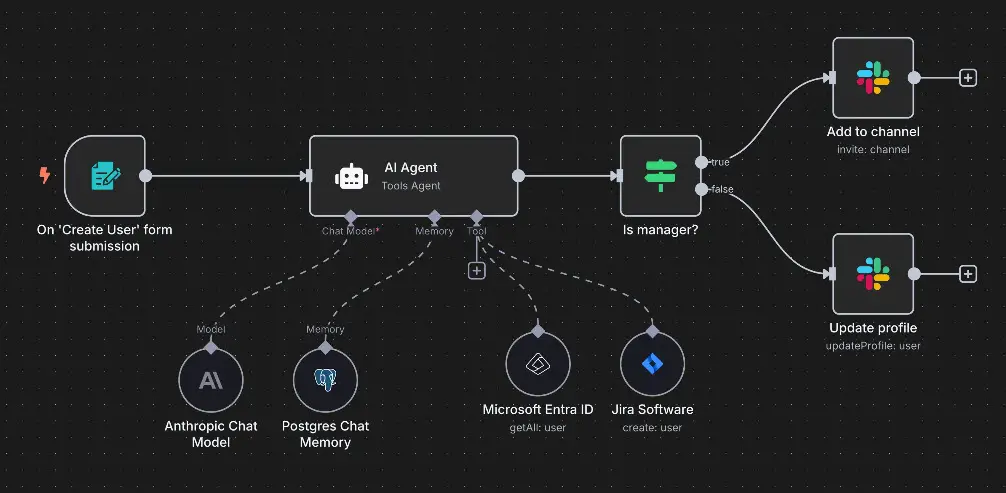
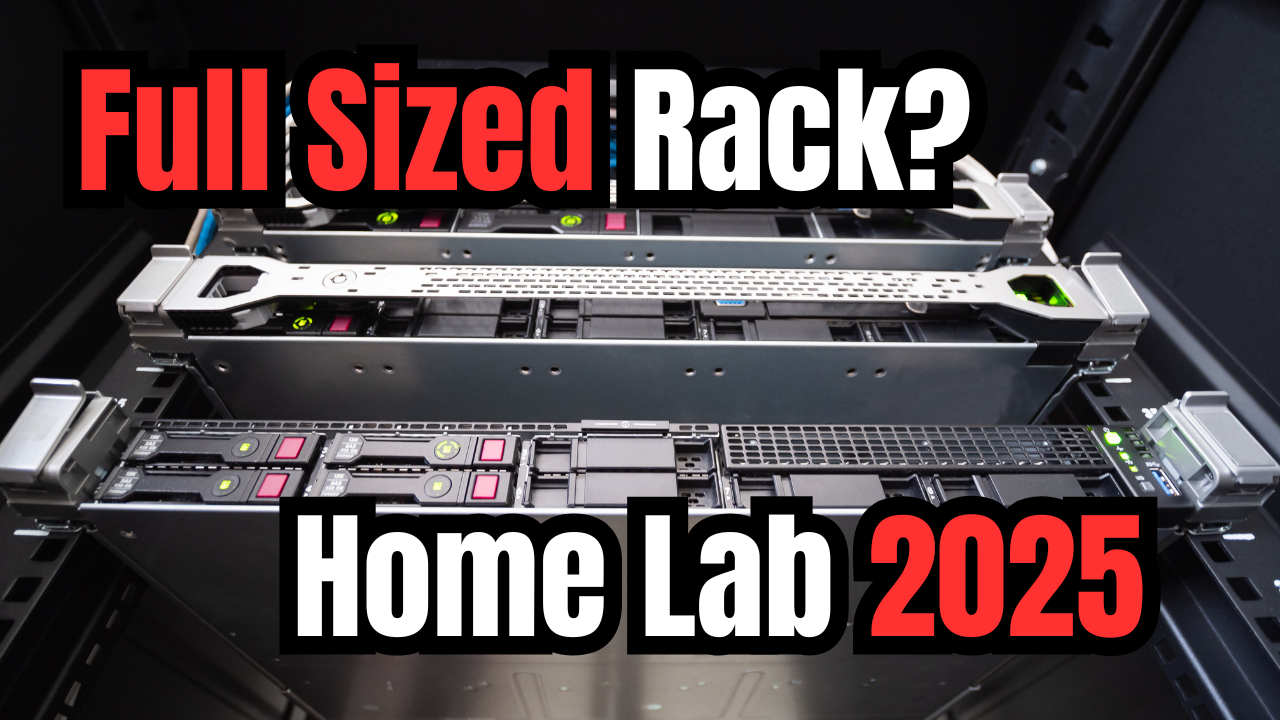
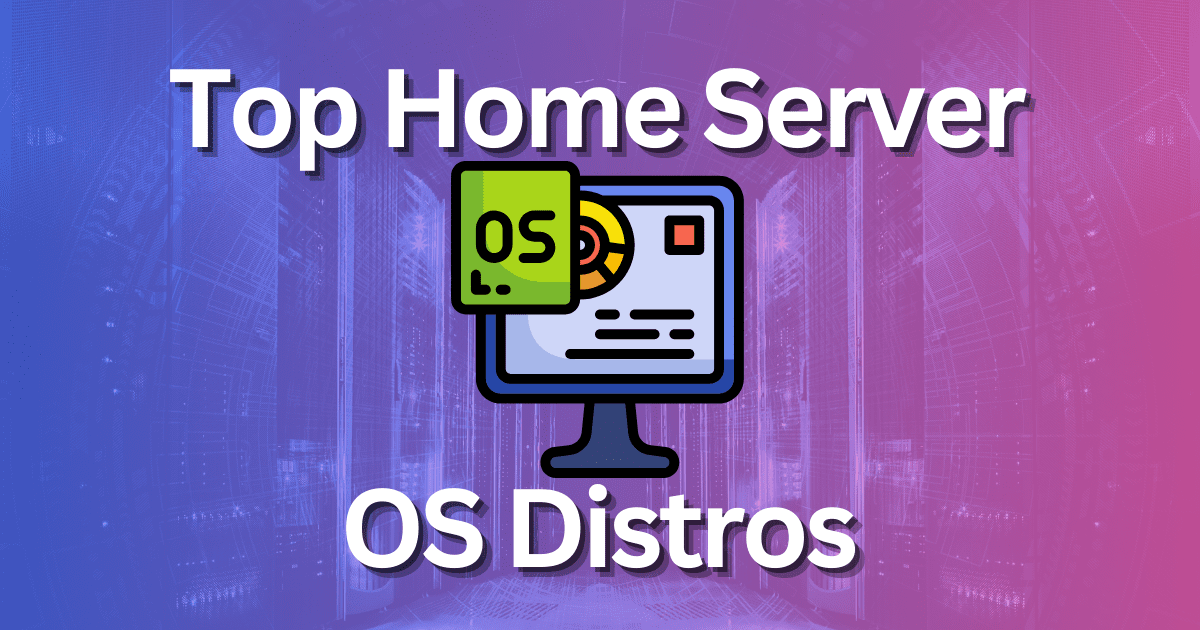
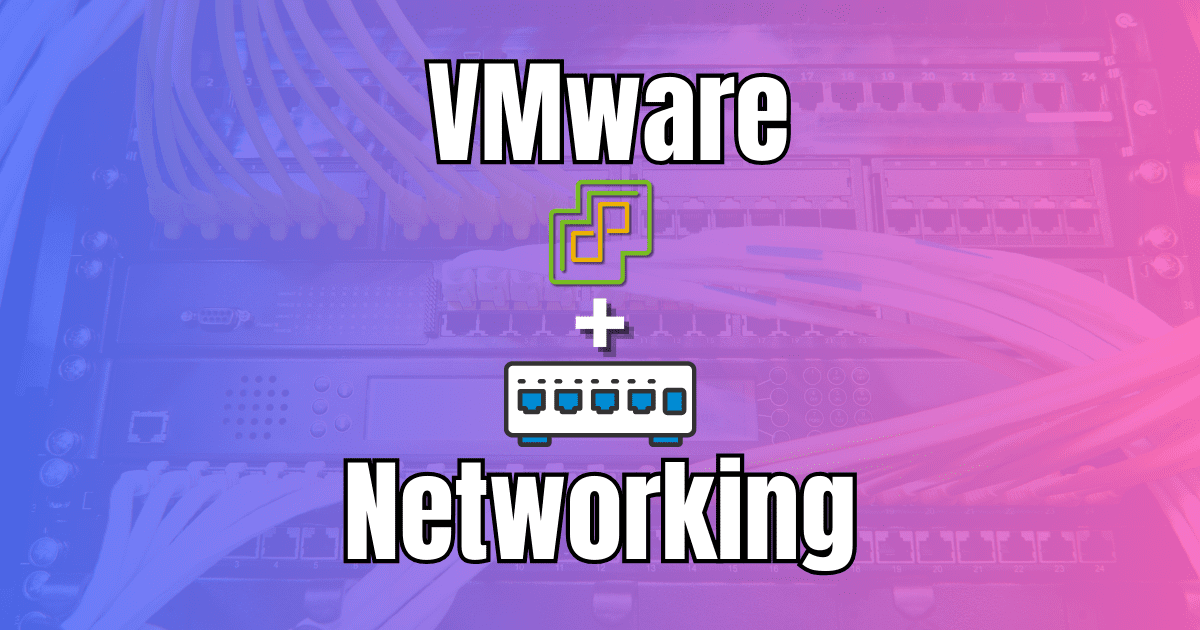
Instead of Portainer, give Komodo a shot. All the best parts of Portainer without the pay wall.
Atoro,
That is a great shout. I like Komodo as well and I am closely watching that project as I think it could definitely become the goto for container management.
Brandon
I’ve been using Portainer for quiet awhile now. Very content with it. Also nice to know you can get a free business license.
For Nginx Proxy Manager, I’m not sure you’re aware that it’s also possible to use it with self signed certificates (like I do).
For all my services that I don’t expose to the internet, I’m using my ‘internal’ Nginx Proxy Manager. For that I don’t need a Letsencrypt cert. What I did is create a self signed cert with validity of 10 years. Safety is less a concern for my internal services. The downside is that you need to install it also in the Trusted Root store of every device that will access the service to become trusted.
When it comes to Watchtower, I’ve stopped using it. I rather have control and update my containers myself (using Portainer). Happened quite a few times that the automated update process broke my container. And I end up having to fix it.
Nice article Brandon!
Jeroen,
Portainer is a great tool! That is awesome as well that you are using its GitOps like feature for automation. I have been testing this with a few containers myself as well and it works really nicely. Thank you again for your comment, really appreciate it.
Brandon
You can just set watchtower to notify of updates rather than actually update the containers.
For my ‘critical’ containers (Home Assistant, NextCloud, ZWaveJS, etc.) I just get a notification when an update is available but for ones that I don’t really care about watchtower does update them.
Richard,
Great point, Watchtower does have some really cool features like that. It is a multi-purpose tool that has many different shades of functionality that can be used for updates, even for just notifications.
Brandon
Hi Brandon
useful video thanks.
Question did you publish the Gitea stack code that you showed in the video anywhere or just the Docker compose above
Cheers
Simon
Hi Simon, thanks for the comment. I have updated the post with the extended version of the code shown in the video.
Kind regards,
Brandon